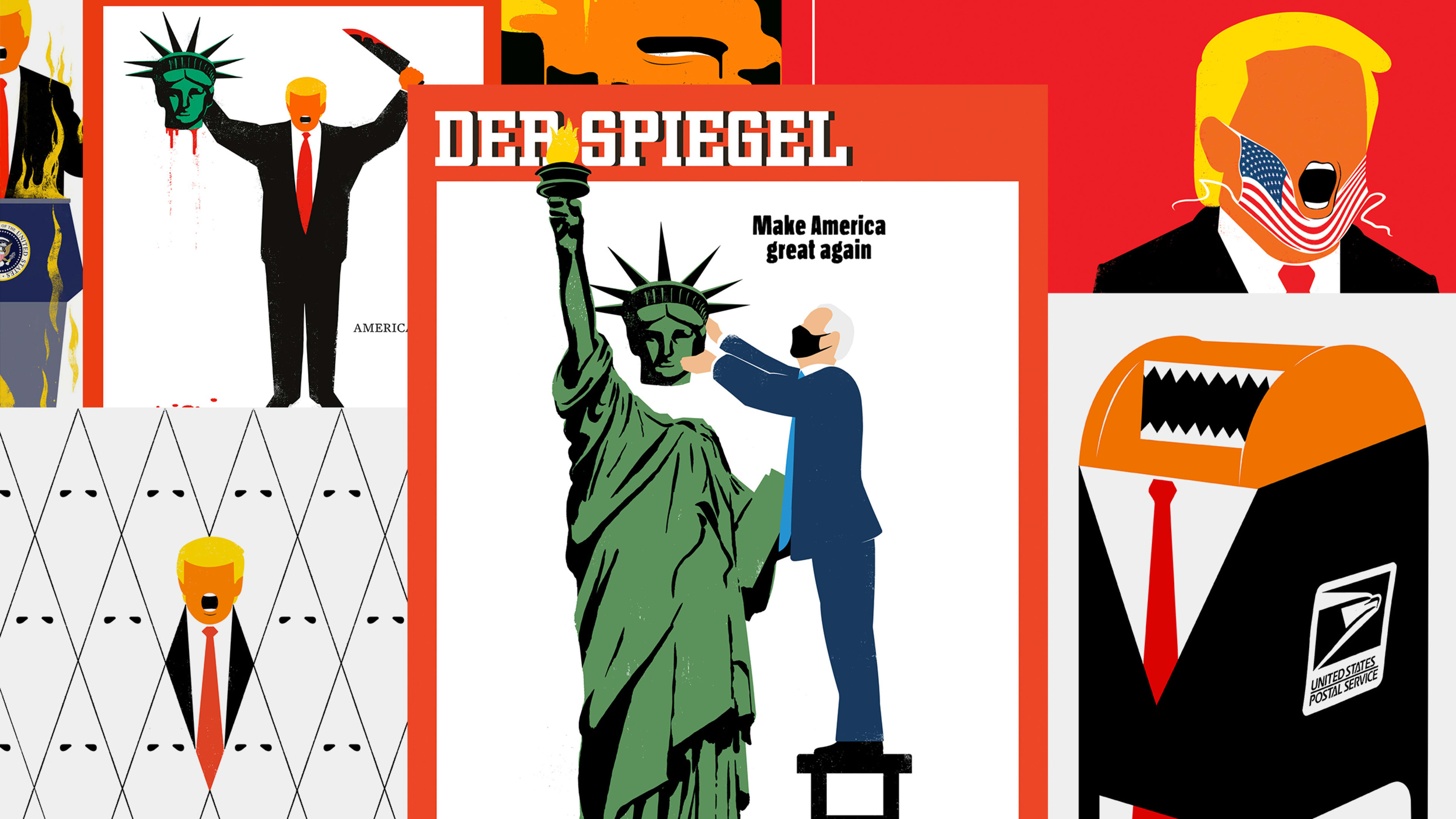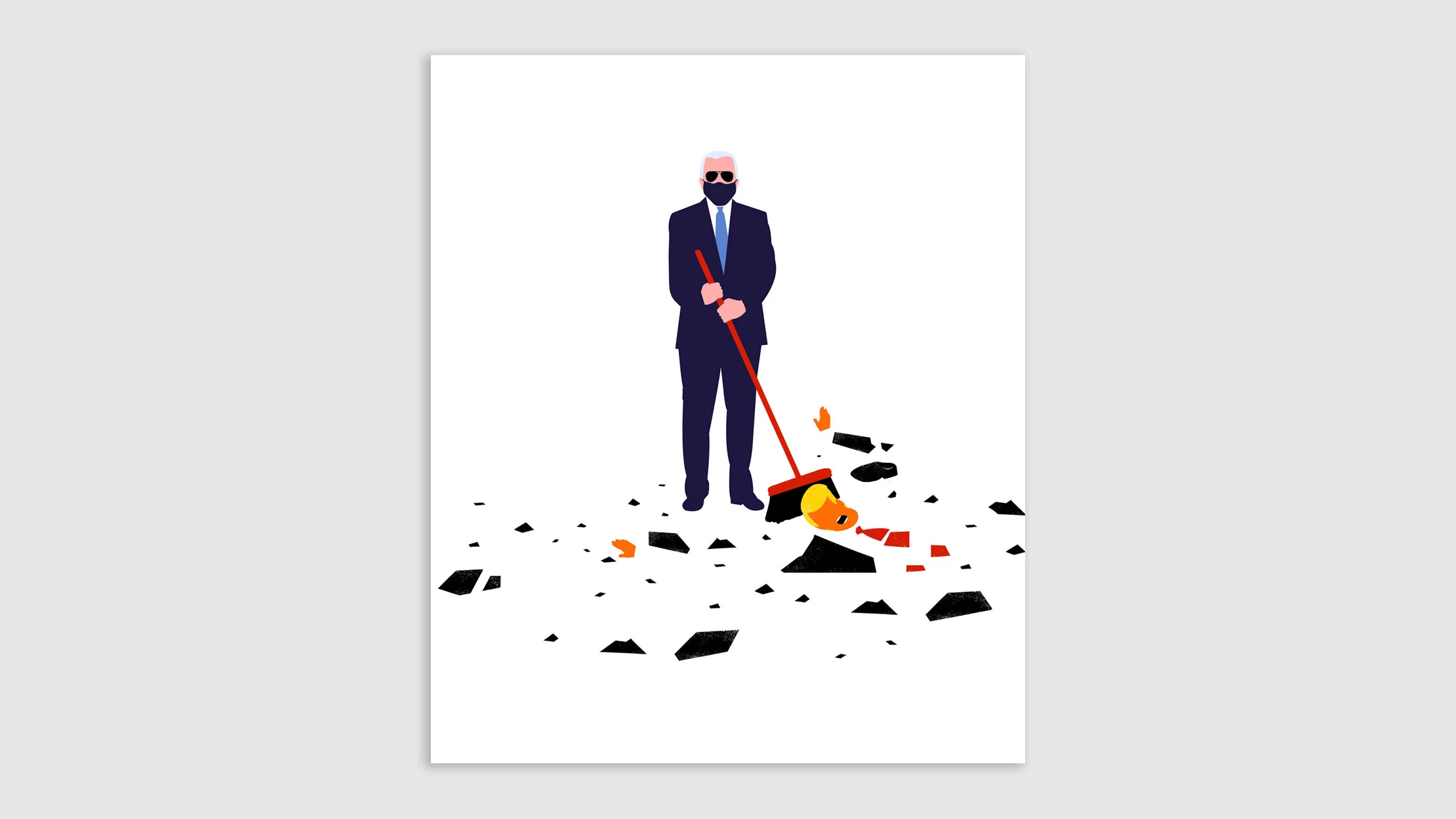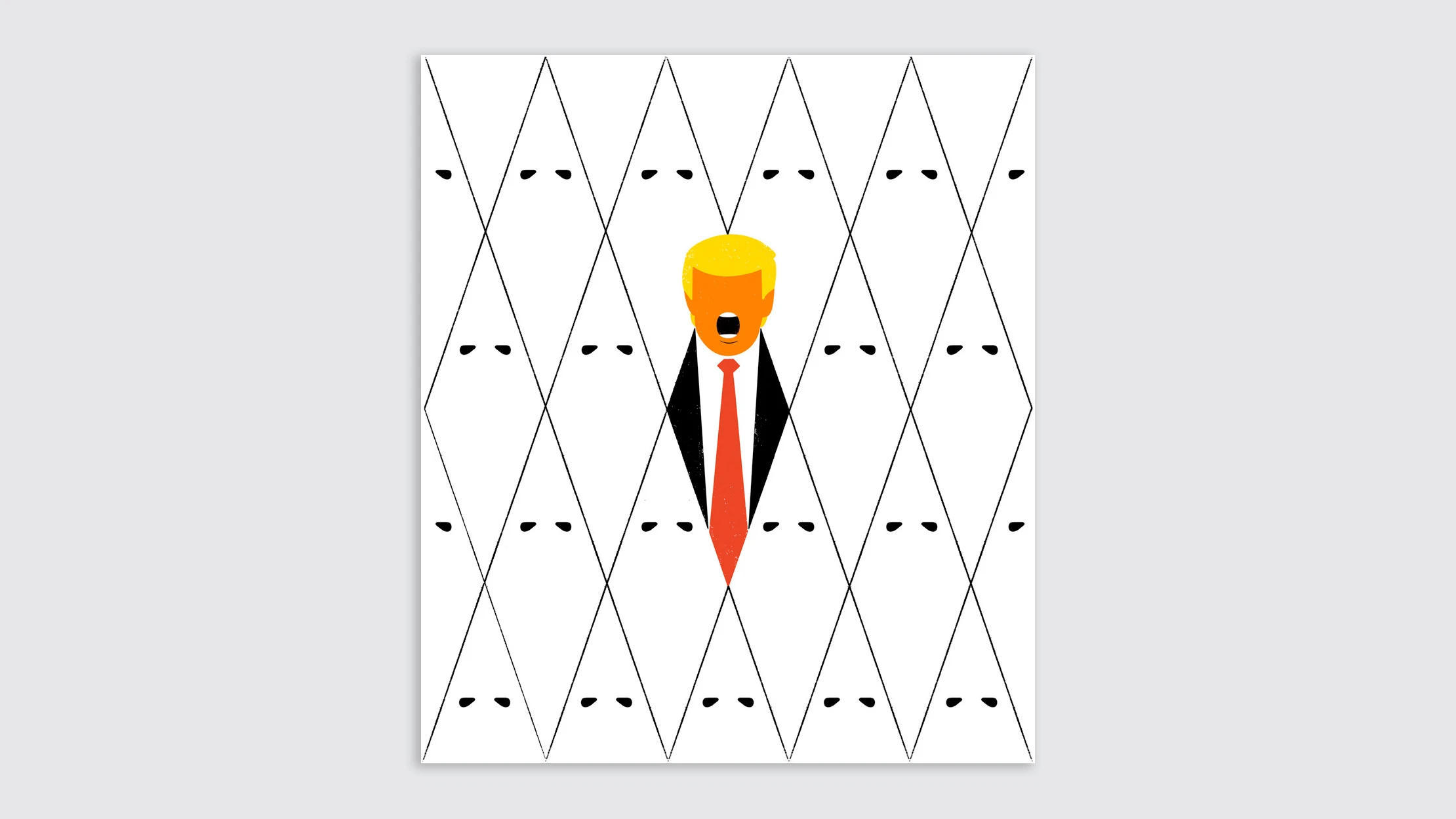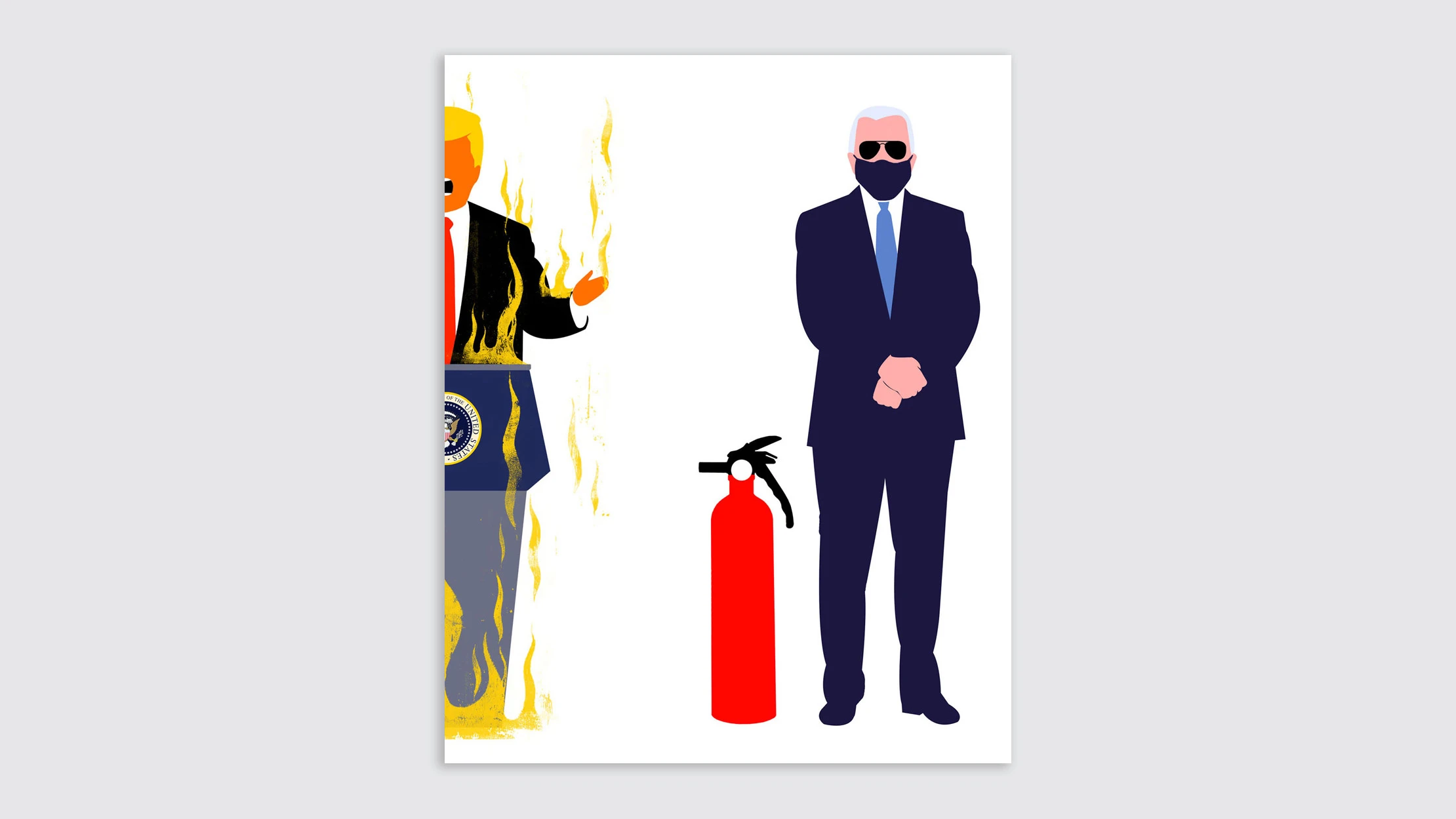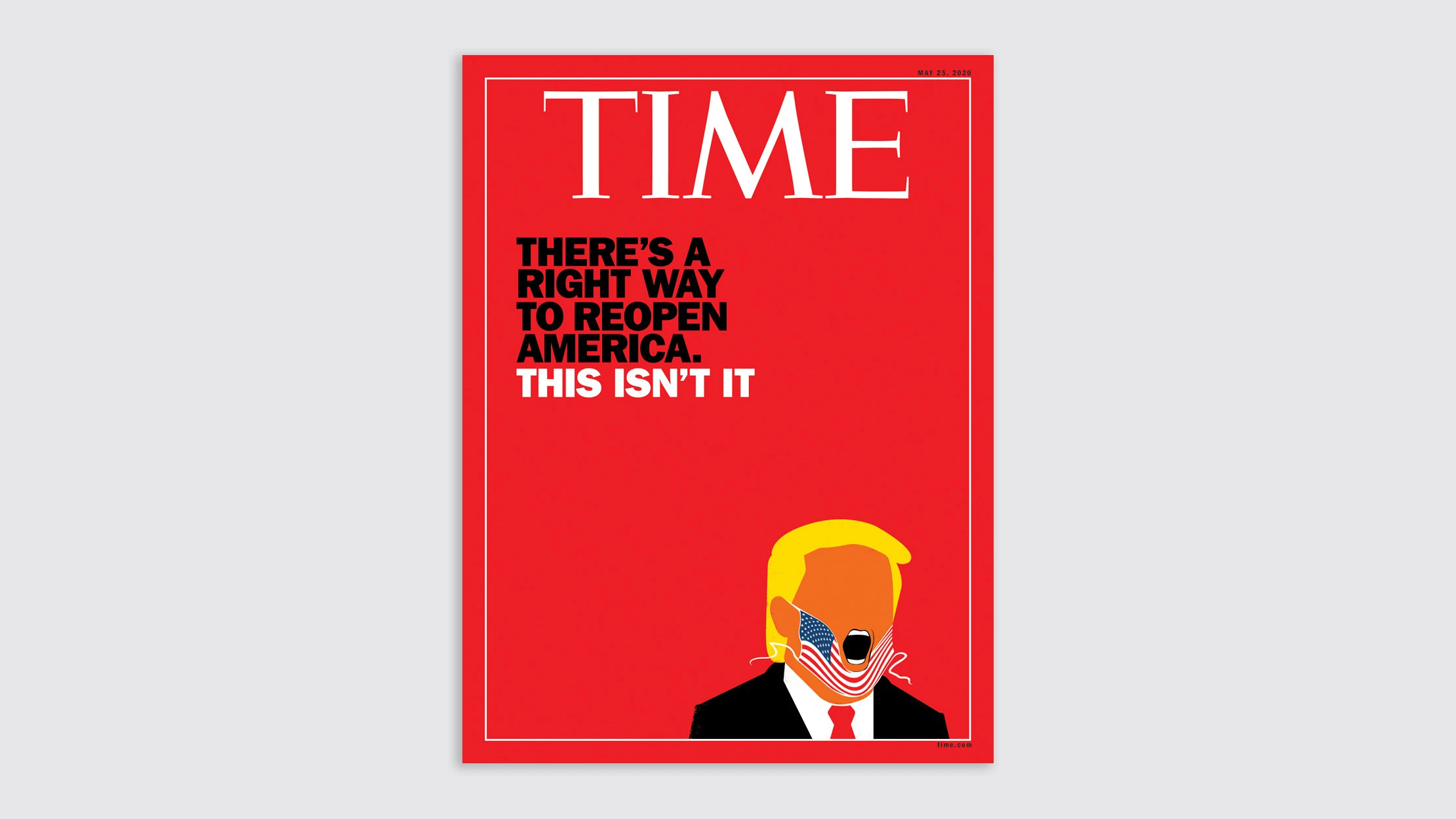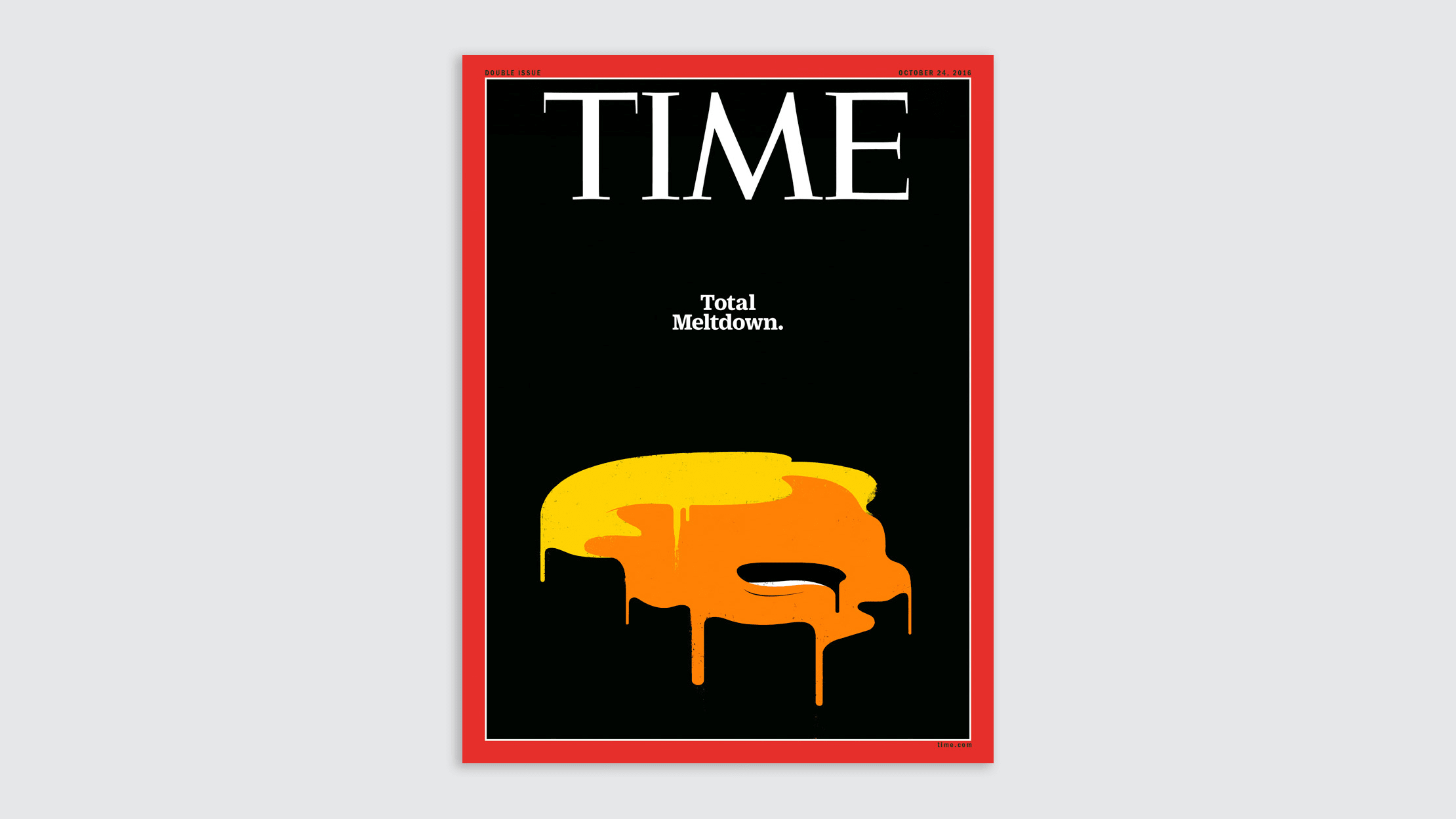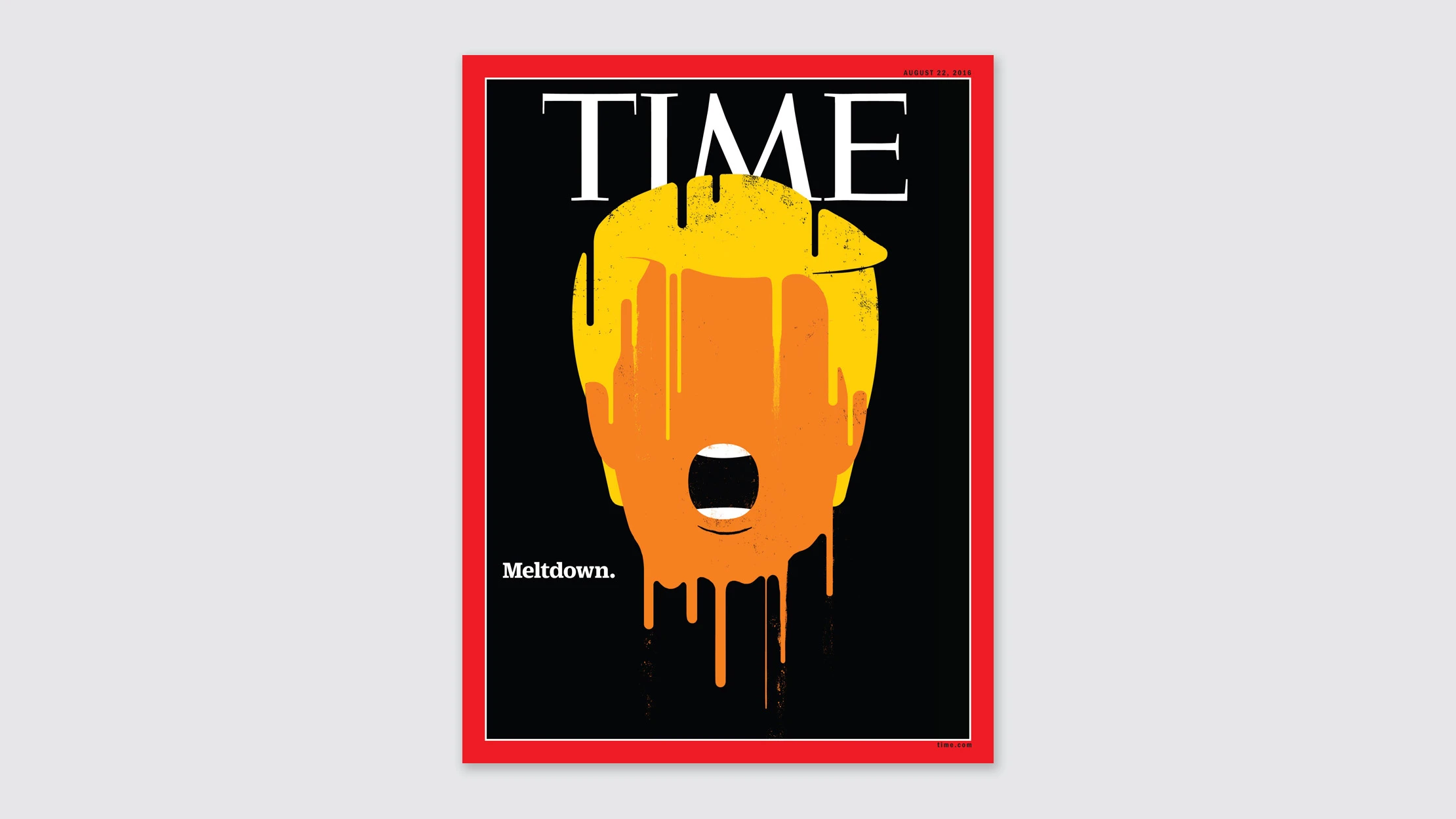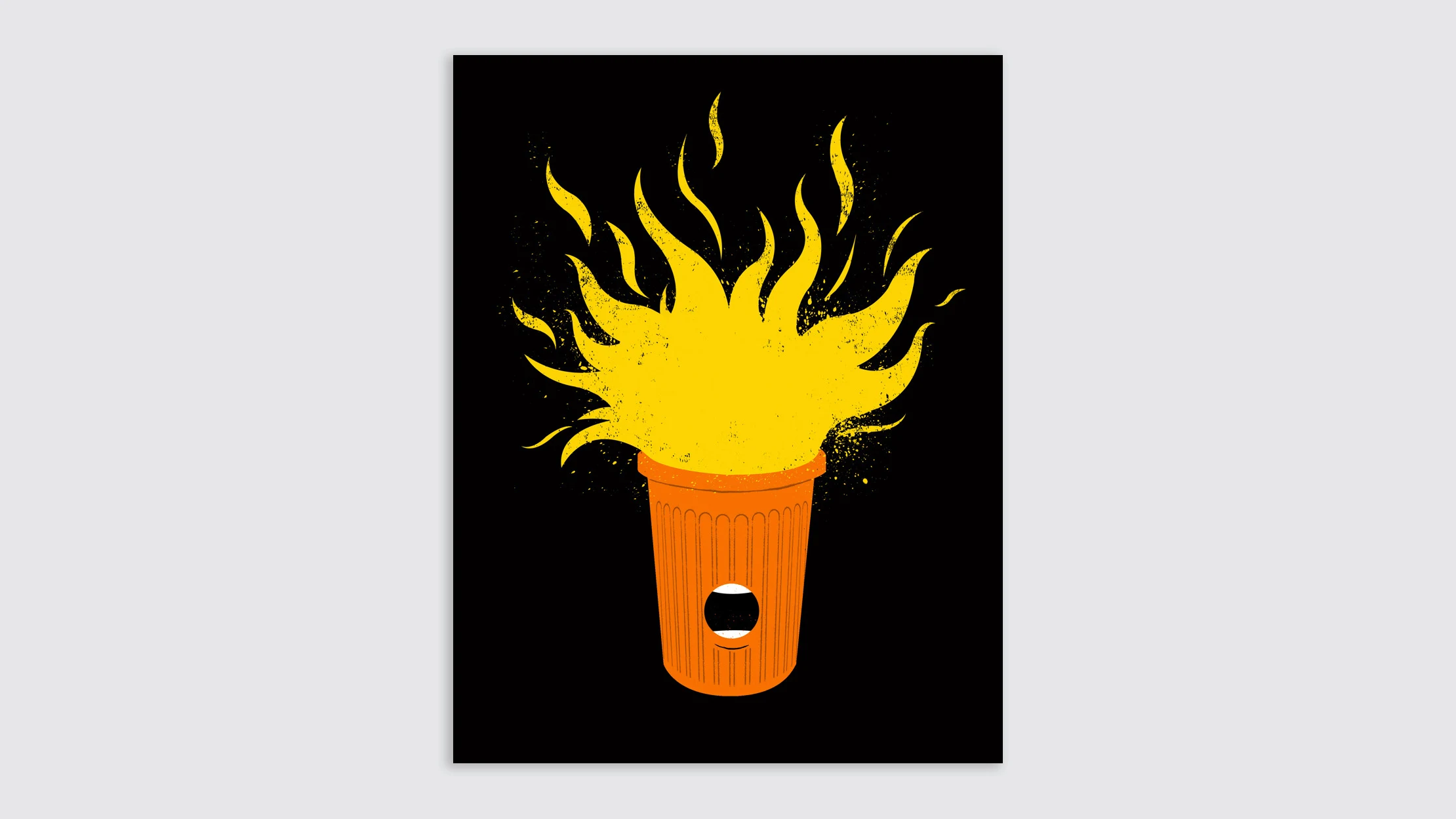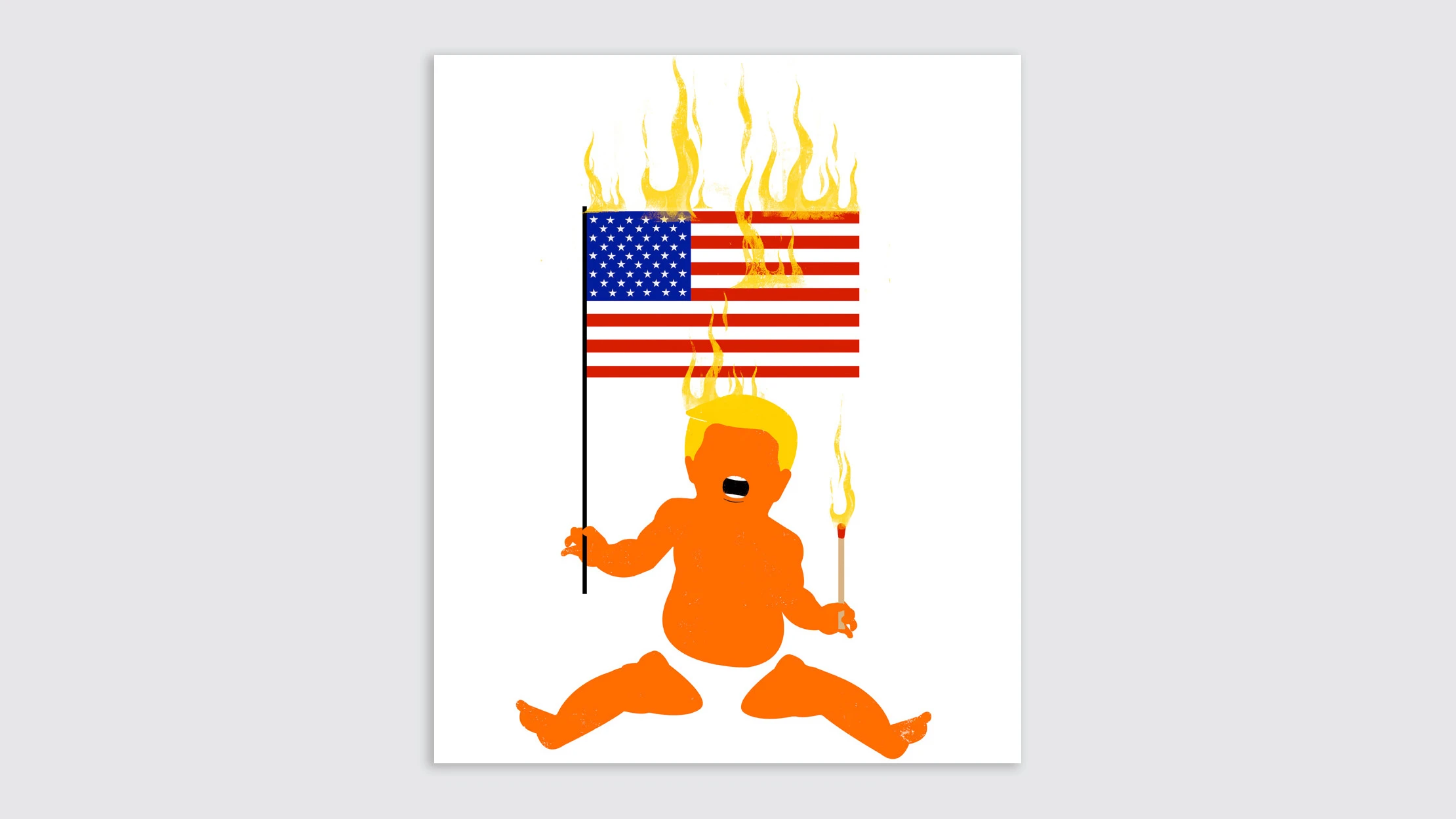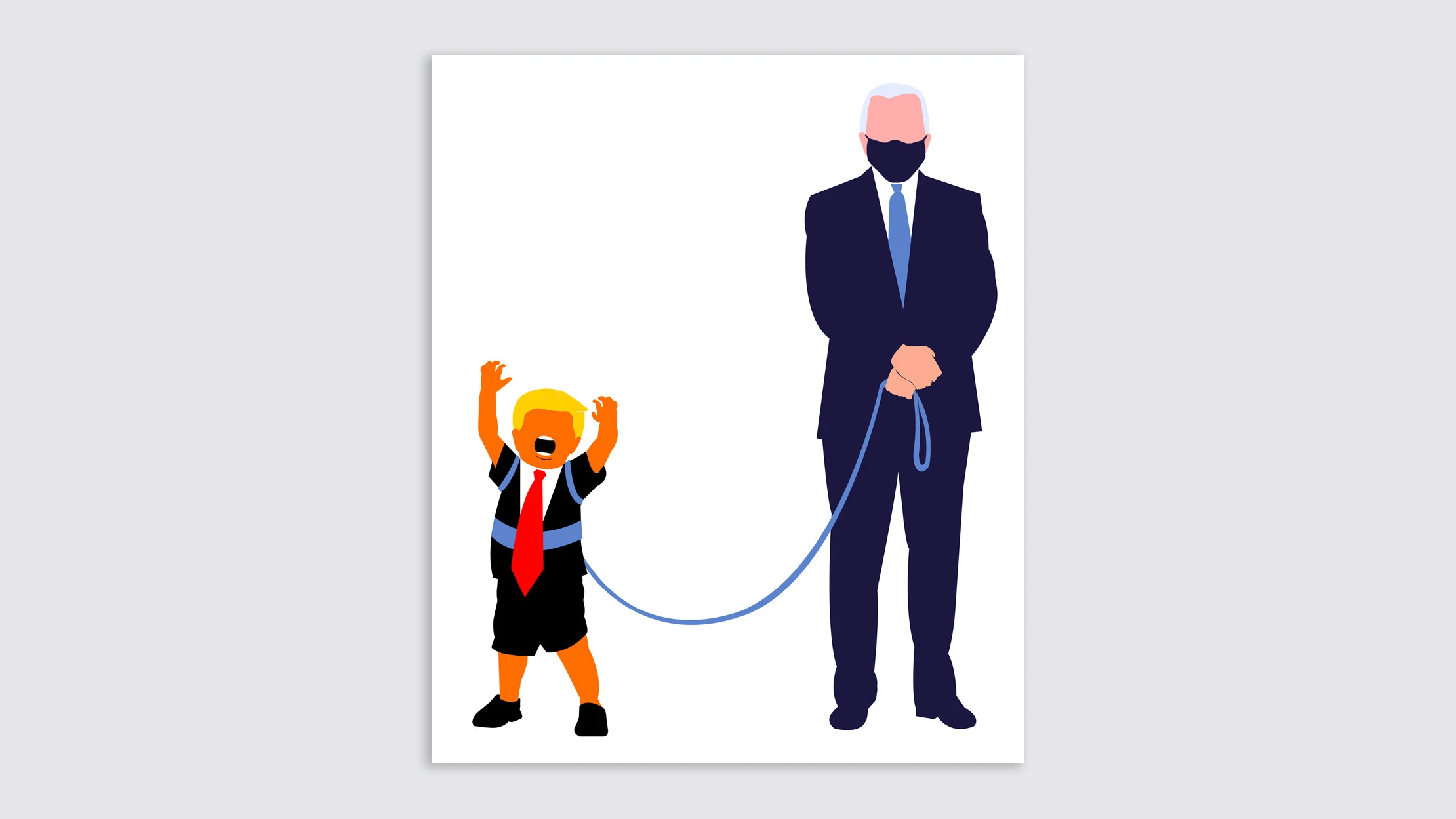In August 2016, a potent, cartoonish, bright orange blob oozed on the cover of Time magazine. Drips of yellow and black leaked down its sides. Just a shouting mouth remained. No, it wasn’t melting plastic, though it was just as toxic.
It was Donald Trump—or, more accurately, a striking illustration of him melting down by visual artist Edel Rodriguez. Over the last four years, Rodriguez has become renowned for his depictions of the U.S. president, completing more than 150 illustrations and 25 covers for Time, Mother Jones, Época, and, perhaps most famously, Der Spiegel. In February 2017, Rodriguez illustrated a Der Spiegel cover featuring President Trump having beheaded the Statue of Liberty. On November 7, 2020, Rodriguez’s most recent cover showed a masked Biden gingerly placing the Statue of Liberty’s head back where it belonged. “Biden restoring the head of the statue seemed to be the best closure for this chapter,” he says.
So what does the satirist do now that Trump is out of office? Fast Company discussed the Trump character Rodriguez built, the power of illustration in politics, and what’s next.
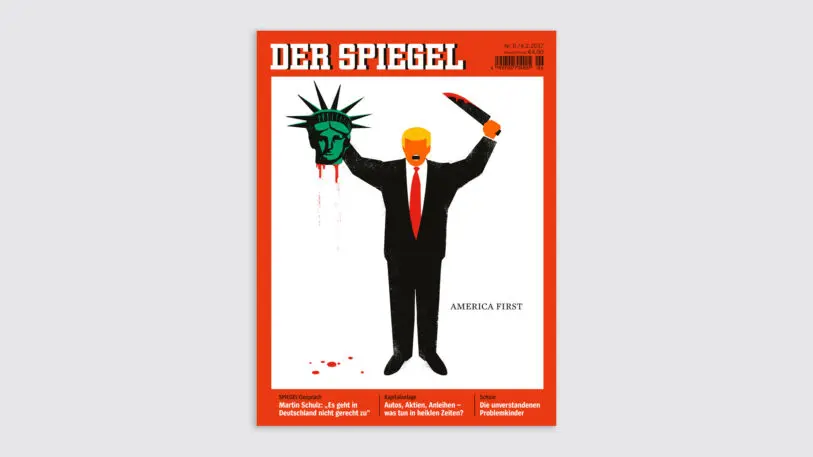
ER: Back in 2015, in the primaries, I became aware of what was going on with [Trump]. I grew up in Cuba and I left a totalitarian state. So I can sense right away that [Trump] spoke like a totalitarian, like a dictator, which I think at first Americans thought was just funny and odd and quirky. Immediately, I wanted to start creating art about that so that people would start taking him much more seriously. I was hoping that I would have some sort of influence over magazines and give them permission to treat this candidate differently.
In terms of developing it, my first idea was that anything that you confront in your life with a danger, like a road sign or traffic cone, is usually a very bright orange. So I wanted to work with that bright orange as a warning sign. I also wanted to simplify it. When you put eyes on a person, whoever that person is—even if it’s the worst person ever—you look at the eyes and have more of a connection and sympathy for that character. So I took away the eyes completely because I didn’t want that. I wanted him to be a symbol [rather] than a person, and to me the symbol was a lot of danger for this country. That’s why [the character] is just this mouth screaming at you.
The other part of it visually [was that] I didn’t want to spend that much time painting him. It was just basically, “I want to get this out.” Every day, every couple of days, or once a week, I was angry about something that he was doing. And in a very quick way, I got it out of my system and put it online. That’s part of the simplicity.
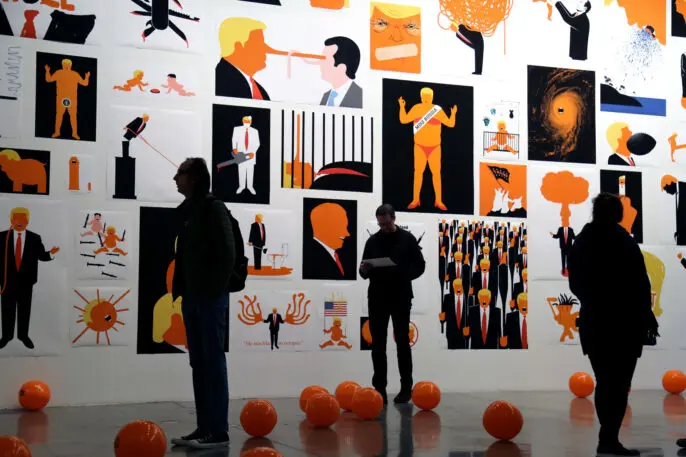
ER: No, not really. The only thing that evolved in my work—and usually in all my work—is that I try to see how far I can push something. So in the beginning, it was establishing a look or a brand. And then it was more about how I can stretch that. It’s a lot of visual gymnastics, because once you establish something that’s recognized, you can start working with it more. That was my interest—surprising people with a new take on it.

ER: The impact that illustration can have. I wasn’t expecting that. Many times we make work as illustrators and they’re nice, they’re decorative, like the New Yorker covers. People look at them and they mark a moment, but they don’t become a political poster that you take to a rally. [This project] elevated the idea of what illustration can be and what it can possibly say.
Also the long-term campaign of it is pretty unique in terms of design history; this idea that you stick with a certain project for four years and it maintained the same structure. I’m really persistent. So that sort of persistence definitely shows up in the work.
FC: What is the power of illustration to cause social change? What is its place in politics?
ER: I think that the interesting thing about illustration is that you don’t really have to invest that much time to be impacted by it. It has the power to influence and guide people, especially with today’s short attention span. They see something, they share it. But if you send them a whole brochure about the election, or you sent them a whole article about a topic of the election, they may not read it.
You also have the possibility to influence someone who disagrees with you in a quicker manner. You could have someone who could completely disagree with my work or someone who’s an independent in the middle and they’re just scrolling through Twitter. Then this thing pops up and they have to look at it. You can decide not to read an article. But you can’t unsee an illustration that CNN puts out for like a second or two seconds.
FC: Did you know that this was going to be a four-year endeavor when you did that first Trump illustration?
ER: Oh yeah. I was like, “I’m not stopping until this guy’s out. I’m not going to adjust. I’m not going to sit back and accept all these things that are occurring without commenting on it.” If he would’ve won [a second term], I would’ve stuck with it. I would’ve kept on going.
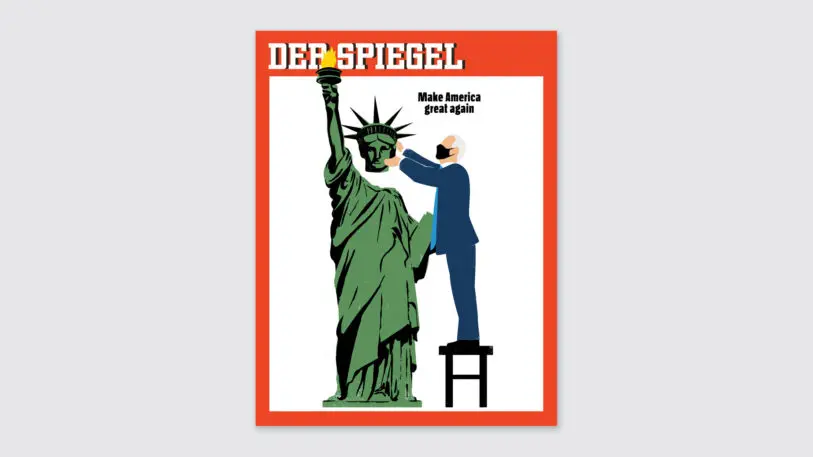
ER: I was just thrilled. I do this because it’s a duty, but I don’t really want to do it, honestly. I’ve been painting and making all sorts of things for 25 years. I would rather be doing work that’s more personal, about my ideas and whatever it is that’s trying to get out of my head. Oh my God it was just a lot of relief that I don’t have to do this anymore. It’s over. [Now] I’ll get back to my life. Get back to the rest of my work.
I’m writing a memoir about growing up in Cuba. It’ll be probably like a 300-page graphic novel about growing up in Cuba and coming to America. Then I have a children’s book that I’m writing after that. I have a Jimmy Hendrix bio book I was asked to illustrate that’s coming out next year. And then my paintings and sculptures and all sorts of other activities. I can’t wait to work on other [projects].
I think to you, to me, to everyone, this has become a giant distraction in our lives. I don’t think for anyone these four years have been progress. You’re just stuck in this thing every day. That is blocking in terms of creativity, moving ahead, thinking about other things. I think it’s really affected a lot of people in the last four years.
Illustrations by Rodriguez are available on shirts, masks, and more here.
Recognize your brand’s excellence by applying to this year’s Brands That Matter Awards before the early-rate deadline, May 3.
